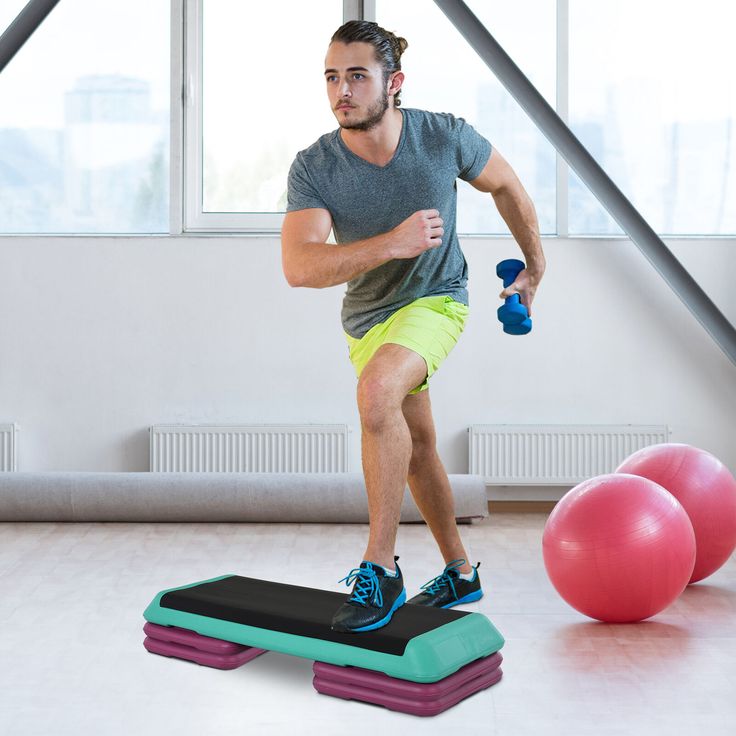Aerobic Exercise for Weight Loss: Tips for Maximum Results
The Role of Aerobic Exercise in Weight Loss
Aerobic exercise is key to shedding pounds. It boosts your heart rate, burns calories, and helps with fat loss. Regular aerobic activity increases your stamina and improves heart health. It’s a sustainable way to create a calorie deficit, essential for weight loss.
To effectively lose weight, you must burn more calories than you consume. Aerobic exercise does this by targeting fat as a fuel source. As you engage in activities like running, swimming, or cycling, your body burns calories, tapping into fat stores for energy.
But aerobic exercise benefits extend beyond weight loss. It enhances overall fitness, contributing to better health and well-being. It also elevates mood and aids in managing stress, which can prevent emotional eating.
A balanced approach to weight loss includes diet and exercise. While proper nutrition is crucial, physical activity ensures that you lose weight from fat, not muscle. Aerobic exercises preserve lean muscle mass while promoting fat burn.
Experts suggest a combination of aerobic exercise with strength training for optimal results. This combination helps maintain muscle tone and keeps your metabolism high, crucial for ongoing weight management.
Lastly, consistency is vital. Incorporate aerobic exercise into your routine several times a week. Aim for progress, not perfection, and remember that any movement is better than none. As you build endurance, you can increase intensity and duration to further boost weight loss.

The Science Behind Fat Loss with Aerobic Activity
The science of fat loss through aerobic exercise is rooted in energy expenditure. As you perform aerobic activities like jogging or cycling, your body requires energy. This energy is derived from burning calories, which include both carbohydrates and stored fats.
How Your Body Burns Fat During Aerobic Exercise
During aerobic workouts, your heart rate increases, and your muscles require more oxygen. This oxygen is essential for the metabolic reactions that convert fats and carbohydrates into usable energy. Prolonged moderate-intensity activity, characteristic of aerobic exercise, predominantly burns fat as the primary energy source.
The Importance of the Aerobic Zone for Fat Loss
The ‘aerobic zone’ is a term used to describe the intensity of exercise at which fat burning is maximized. Typically, this is at 60-80% of your maximum heart rate. Staying within this zone during workouts ensures your body is efficiently burning fat while preserving muscle mass.
Aerobic Exercise and the Role of the Afterburn Effect
A notable benefit of aerobic activity for weight loss is the ‘afterburn effect’ or EPOC (Excess Post-Exercise Oxygen Consumption). Although less pronounced than with anaerobic exercises, EPOC occurs after aerobic exercise as well. Your body continues to consume more oxygen, hence burn more calories, even after you finish your workout.
Understanding the science behind fat loss with aerobic activity can help you optimize your workouts for better weight loss results. It emphasizes the need for consistent, moderate-intensity workouts that target the body’s fat stores for energy, contributing to effective and sustainable weight management.
How Much Aerobic Exercise Do You Need for Significant Weight Loss?
Embarking on your weight loss journey, the question arises: how much aerobic exercise is enough? For meaningful results, experts suggest a robust routine. Let’s explore the recommended amounts and their impact on fat reduction.
Optimal Duration for Weight Loss
How long should your aerobic sessions be? Research shows that at least 150 minutes per week of moderate aerobic exercise is needed for notable weight loss. This aligns with health guidelines advocating for a healthier lifestyle. Shorter workouts may only lead to modest reductions in body fat and weight.
Intensity Matters
Intensity is as crucial as duration. To burn fat effectively, your heart rate should reach the aerobic zone. This is typically 60-80% of your max heart rate. Being in this zone will ensure you’re burning the most calories from fat.
Consistency Is Key
Regular workouts contribute to ongoing weight loss. Daily exercise may seem challenging, but it’s worth it. Aim for routine aerobic activity throughout the week to maintain progress.
Incremental Progression
Start at a level that suits you and gradually increase over time. As your fitness improves, so will your ability to sustain longer and more intense workouts. This will help accelerate your fat loss further.
In summary, consistent, moderate to vigorous intensity aerobic exercise, totaling at least 150 minutes per week, is essential for significant weight loss. As you progress, continue to challenge yourself with increased duration and intensity to maximize fat burning potential.
Types of Aerobic Exercises to Incorporate into Your Routine
Selecting the right types of aerobic exercises can greatly enhance your weight loss efforts. Here are varied options to keep your routine diverse and enjoyable:
Walking
Start with walking, a low-impact activity ideal for all fitness levels. Moderate-pace walking can burn significant calories over time. Aim for brisk walks to get your heart rate up.
Running
For higher calorie burn, progress to running. It accelerates fat loss and improves cardiovascular health. Integrate short runs into your week and increase as you get stronger.
Cycling
Cycling is another superb aerobic exercise for weight loss. It’s gentle on joints and can be done outdoors or on a stationary bike. This activity suits all ages and fitness levels.
Swimming
Swimming provides a full-body workout. It’s excellent for those looking for low-impact but high-calorie burn exercise. Swim laps regularly for best results.
Aerobic Classes
Joining aerobic classes offers motivation and guidance. Choose from step aerobics, Zumba, or dance fitness to make exercise fun and social.
Rowing
Rowing is an underestimated aerobic activity. It works the legs, arms, and core, offering a comprehensive workout. A rowing machine will give you a great indoor option.
Adding variety to your aerobic routine keeps it exciting and covers different muscle groups. It helps avoid plateaus in weight loss and keeps you engaged with your fitness goals.
High-Intensity Interval Training (HIIT) for Efficient Fat Burning
High-Intensity Interval Training, or HIIT, is a powerful tool for fat loss. It involves short bursts of intense exercise followed by rest periods. This method boosts your heart rate and burns calories fast. Here’s why HIIT should be a part of your fitness plan for weight loss:
- Quick Calorie Burn: HIIT sessions can burn a lot of calories in a short time. They are time-efficient workouts that fit easily into busy schedules.
- Afterburn Effect: After a HIIT workout, your body continues burning calories. This happens as your body recovers and returns to a resting state.
- Metabolism Increase: Engaging in HIIT can help build muscle. More muscle leads to a higher resting metabolic rate. This means you burn more calories even when not exercising.
- Adaptable Workouts: HIIT workouts can use bodyweight, weights, or cardio machines. This makes them versatile for home or gym environments.
When starting HIIT, it’s crucial to do so safely. Beginners should start slowly and increase intensity over time. Always warm up before and cool down after your workouts. Consult a healthcare provider if you have any health concerns before starting HIIT.
For those ready to include HIIT in their aerobic exercise for weight loss, the benefits can be significant. Incorporating this training a few times a week can accelerate fat loss and improve overall fitness.
Strategies to Safely Implement Aerobic Workouts into Your Weight Loss Plan
Embarking on a weight loss journey through aerobic exercise requires a thoughtful approach to avoid injury and ensure longevity in your fitness routine. Here are strategies to safely add aerobic activities to your plan for shedding extra pounds:
- Start Slowly: If you’re new to exercising, begin with low-intensity activities and gradually increase intensity.
- Warm-Up and Cool-Down: Always start with a 5-10 minute warm-up and finish with a cool-down to prevent muscle soreness.
- Listen to Your Body: Pay attention to what your body signals. Rest when you feel exhausted or pain.
- Hydration is Key: Drink water before, during, and after workouts. Staying hydrated is vital.
- Balanced Diet: Combine exercise with healthy eating. Don’t rely on exercise alone for weight loss.
- Rest Days Are Important: Schedule rest days to allow your body to recover and improve.
- Mix It Up: Vary your workouts to keep things interesting and work different muscle groups.
- Set Realistic Goals: Aim for achievable targets to stay motivated and track your progress.
- Safety Gear: Use proper shoes and equipment to minimize the risk of injury.
- Get Medical Advice: If you have health issues, consult a doctor before starting an exercise routine.
Implementing these strategies ensures that your aerobic exercise for weight loss is effective and sustainable. Careful planning and respecting your body’s limits can lead to a rewarding and healthy weight loss experience.
Understanding the Long-Term Benefits of Aerobic Exercises for Weight Management
Engaging in aerobic exercise regularly has long-term benefits for weight management. These benefits are crucial not just for losing weight, but for keeping it off.
Sustained Calorie Burning
Even after reaching your weight loss goal, aerobic exercise helps maintain a higher metabolic rate. This means your body continues to burn calories more efficiently, even at rest.
Enhanced Heart Health
Regular aerobic workouts strengthen your heart. A strong heart pumps blood more effectively, which can support overall health and prevent weight gain.
Improved Muscle Tone
While aerobic exercise focuses on burning fat, it also helps maintain muscle mass. Toned muscles boost metabolism, aiding in long-term weight control.
Better Mental Well-being
Aerobic exercise releases endorphins, which helps reduce stress. Less stress can mean fewer stress-related eating habits, contributing to weight maintenance.
Increased Physical Endurance
As you build stamina, you can do more physical activity. This increase in potential activity can help keep excess weight off.
Regulation of Appetite
Regular aerobic exercise can regulate hormones that control appetite. Balanced hormones can lead to better hunger management.
Incorporating aerobic activity into your lifestyle is key for long-term weight management. Combine it with a balanced diet and make it a part of your routine for the best results.

